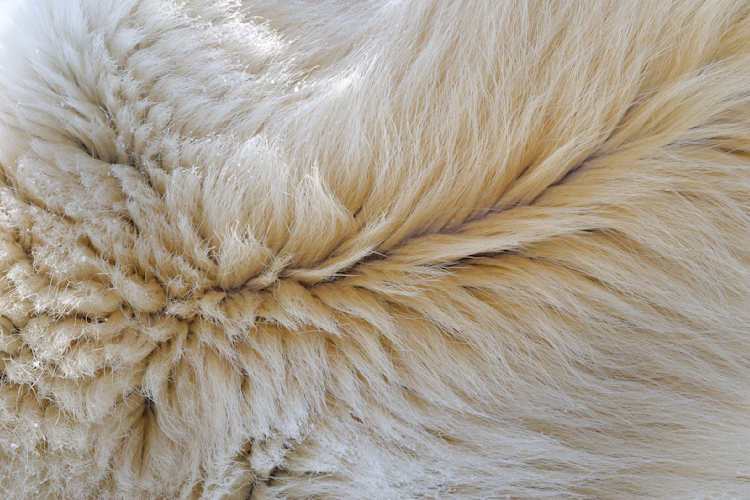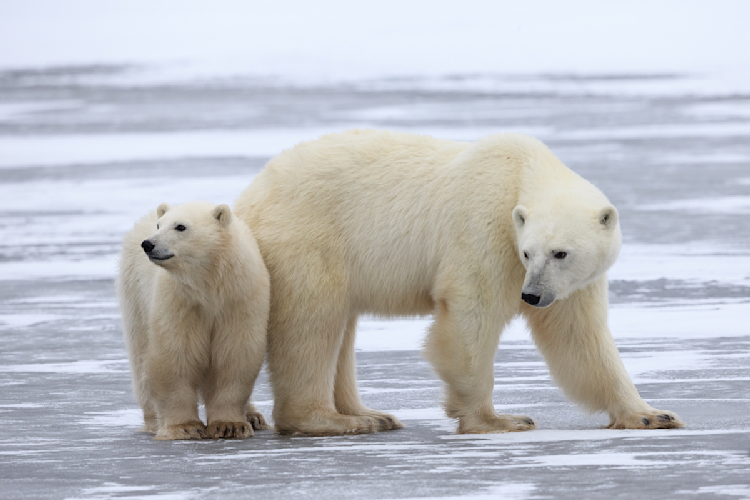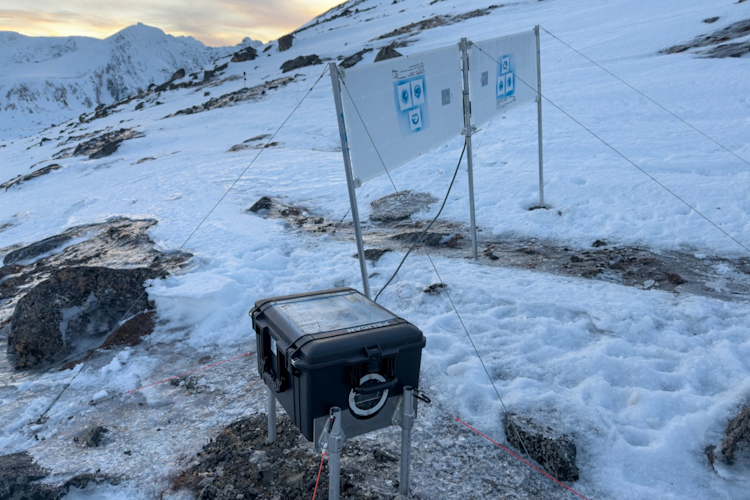Researchers may soon have a new way to track polar bears in the wild, following a five-year study into new technology developed jointly by 3M and Polar Bears International and tested by a team of scientists. The study, the results of which have just been published in the journal Animal Biotelemetry, examined three different versions of small satellite trackers that can be attached to polar bears, transmitting coordinates and other information until they fall off. It found that one prototype in particular holds a real promise of giving researchers another option as they seek to gather as much information as possible about a species that is extremely difficult to observe at length in the wild.
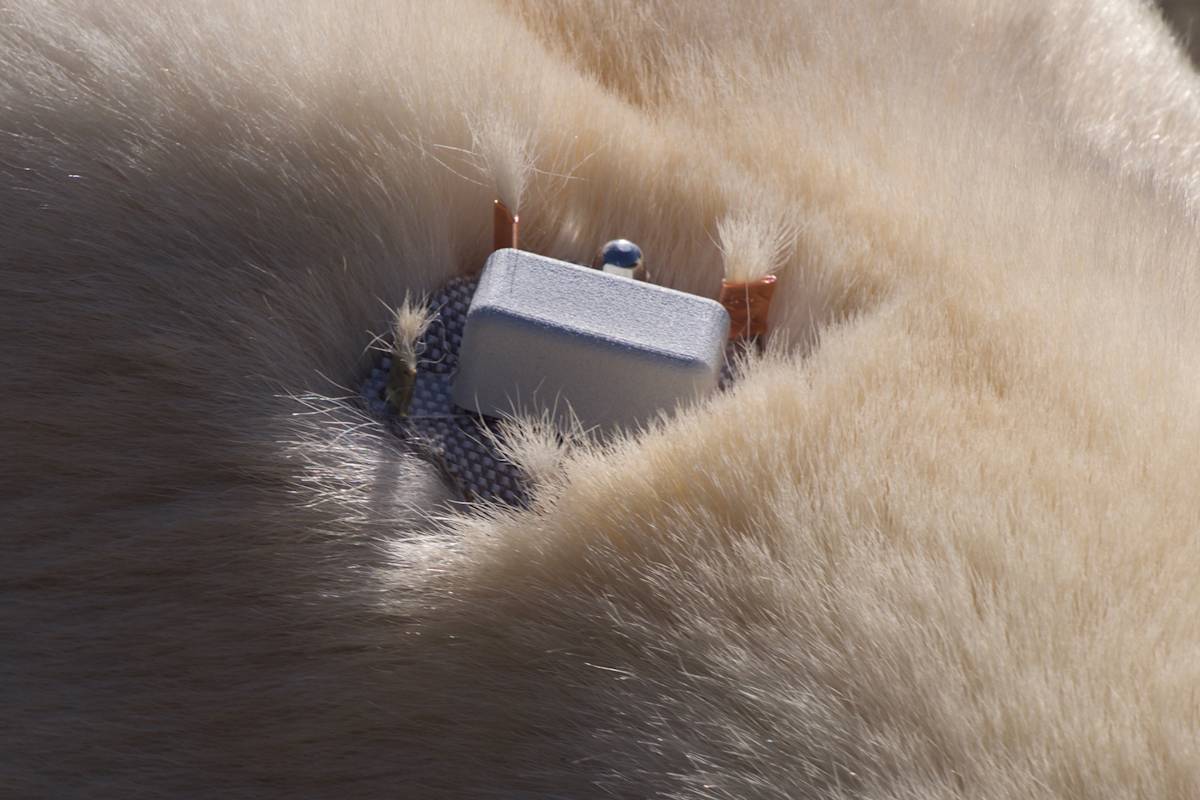
Photo: Emily Ringer
Tracking Polar Bears Without Collars
By Kieran Mulvaney, Guest Contributor
MINS
15 Jul 2024
Alternatives to collars
Much of what we know about polar bears’ travels and behaviors is from radio collars that affix around bears’ necks; however, these only work on adult females, because the necks of adult males are so large that collars would simply slide off over their heads. Immature bears, meanwhile, grow so rapidly that a collar could cause harm.
In recent years, researchers have also used satellite-linked ear tags, which have enabled them to track the movements of both sexes and multiple age classes of bears. However, whereas radio collars are pre-programmed to fall off after a predetermined period, ear tags are permanent fixtures and can become torn off when bears are fighting, hunting, or possibly even just walking among dense vegetation, damaging the ear in the process. Another option is subcutaneous implants, but these require minor surgery.
Despite their comparative effectiveness, collars have also come in for some criticism from Indigenous communities and others concerned that they may impact bear behavior – by, for example, making it more difficult for collared bears to hunt seals, although several studies have shown no long-term negative impact to polar bears and collars are widely used across wildlife species. Accordingly, the idea behind testing the new technology – dubbed “burr on fur" tags — is, explains study lead author Tyler Ross of York University, about more than giving researchers an additional tool for polar bear study.
“There’s a constant striving on the part of researchers to find the most minimally invasive way of doing this work,” he says. “We know that we have to study the bears, and information on their movements and behavior is so important. But finding a way to do that while minimizing the impact on the bears — that’s the goal.”
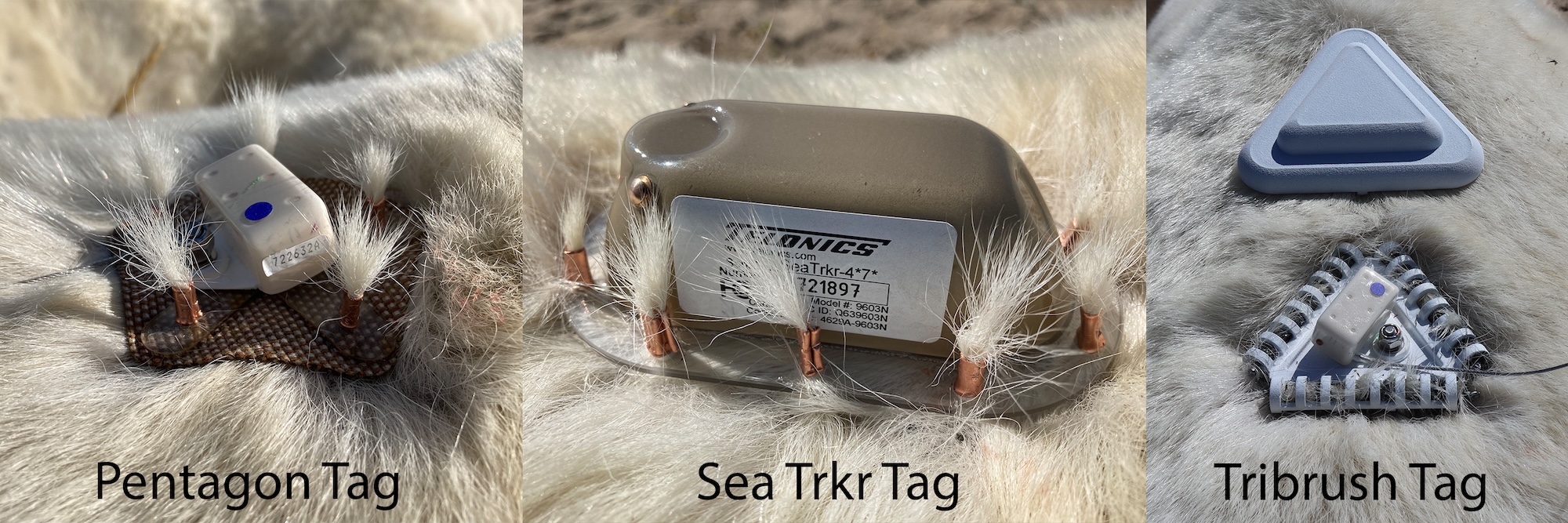
Attaching the tags
The process by which burrs are attached begins in much the same way as affixing radio collars: by darting a bear and getting to work while it sleeps. Ross and colleagues tested three different types of burr tags, each of which had a slightly different means of application, but all involved some variation of pulling bears’ hairs through small holes and fastening the tags in place.
“It’s certainly a little more fiddly than putting a collar on a bear, that’s for sure,” Ross admits. “But I found it easier than I was anticipating it to be. The first one was a bit of a learning process. It's a little finicky getting the hair pulled through the holes. But I found after we did it once it went quite smoothly afterwards. It was a pretty easy application.”
Two of the three tag designs — a five-sided device known as a Pentagon tag, and a three-sided one called the Tribrush tag — used the same technology for transmitting data as ear tags, which connect to Argos satellites (an older technology that is less accurate than GPS). The third design, an oval-shaped tag with 10 holes through which to pull hairs called the SeaTrkr, used an Iridium-linked transmitter. The SeaTrkr not only stayed fixed for longer — an average of 58 days — but also provided the most accurate data, suggesting that it may be the best design on which to focus going forward.
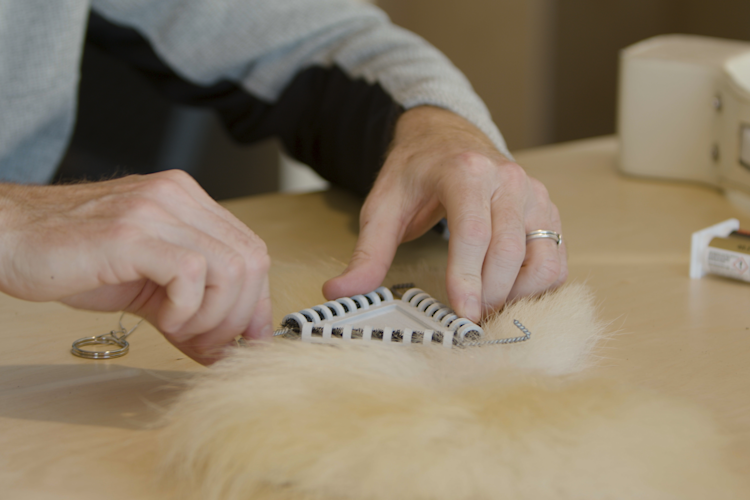
Another research tool
Fifty-eight days is considerably less than the amount of time that either radio collars or ear tags can stay attached (a couple of years and an average of 137 days, respectively). And even if the length of time can be extended, there is a firm limit on their duration, as polar bears molt each summer. As a result, says Ross, burr on fur tags’ most likely role is an addition to existing options rather than an outright replacement. However, he adds, there are specific instances where they may be especially useful.
“I think it’s another tool in the toolbox,” he says. “In certain instances where collars may not be appropriate, and certainly for the male bears, it offers great promise.”
One area in which their usefulness particularly stands out, he says, is when dealing with “problem” bears that have entered Arctic communities and that have to be darted and transported elsewhere.
“If you're capturing the bears already and you’re, say, releasing them north of Churchill, this is a great tool,” he explains. “You can attach the burrs, monitor the bears’ movements, and try to mitigate any repeat encounters. And then the tags just drop off within a timeframe that is probably appropriate, because by the time they’ve fallen off, the sea ice has moved in, and the bears are heading out onto the ice and away from human habitation.”
Additionally, he says, they may be an important component of studying bear behavior in particular times and places.
“There are shorter term applications for applied research, where maybe you want to look at male bear behavior for a specific time of year,” he says. “During breeding season, for example, or what’s known as hyperphagia, when the bears are eating high numbers of seals in the springtime. There’s the period when they transition to land in summer, or while they’re on land. So, there are all kinds of windows that are particularly interesting, and the tags may afford a good opportunity to study bears at those times.”
The next step is to further refine the tags, by experimenting with different ways of fastening them that may enable them to stay in the fur longer. Ross confesses to a level of genuine excitement at being involved in cutting-edge research that may greatly add to researchers’ ability to learn about polar bears.
“I feel incredibly honored and lucky to be involved in this,” he says. “It’s really a privilege for sure.”
Special thanks to 3M, York University, University of Alberta, Environment and Climate Change Canada, Manitoba Sustainable Development, Ontario Ministry of Natural Resources and Forestry, and Ecofish Research Ltd. for collaborating with us on this research. In addition to testing “burr-on-fur” tags on wild polar bears as described in this paper, we’re grateful to the following zoos and aquariums in our Arctic Ambassador Center network for their role in helping us refine the tags through testing on bears in their facilities: Point Defiance Zoo & Aquarium, Kansas City Zoo, Columbus Zoo and Aquarium, San Diego Zoo Wildlife Alliance, Como Park Zoo, Oregon Zoo, Lincoln Park Zoo, Louisville Zoo, Maryland Zoo in Baltimore, Utah’s Hogle Zoo in the U.S.: Assiniboine Park Zoo, Cochrane Polar Bear Habitat, and Toronto Zoo in Canada; Skandinavisk Dyrepark in Denmark and Vienna Zoo in Austria.



